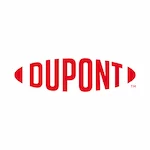
- Published 2021
- No of Pages: 162
- 20% Customization available
Aluminium Ingots Industry – Manufacturing Project Report and Supply Chain Assessment
Request a Free Sample
Aluminium Ingots Definition and Industry Trends
This aluminium ingots manufacturing project report provides a microscopic view of this industry from manufacturing perspective. This is a ready-to-use business intelligence tool for existing manufacturers, new entrants as well as other participants in the value chain such as raw material suppliers, importers, exporters and distributors. The report helps the participants to understand the industry in a better way and align business resources more efficiently.
How are aluminium ingots produced
The aluminium ingots production process is quite complex, labor and cost intensive. Aluminium ingots production process starts with the mining of bauxite. Bauxite is a primary source of aluminium which is crushed and converted into alumina. During the next step, alumina undergoes reduction process in an aluminium smelting plant. In this process, liquid aluminium is obtained which is cast in the form of ingots. Ingots is the primary form of aluminium which is then converted into alloy and cast into various shapes.
Aluminium ingots industry has been undergoing modernization. Companies have adopted innovative manufacturing/production techniques to optimize emissions. There are players who are now using renewable energy-based production techniques which are sustainable and produce very low CO2 equivalent. Example of such companies who have optimized their production process and significantly reduced their carbon footprint are Rio Tinto, Norsk Hydro ASA, Trimet Aluminium, Rusal and others. CO2 Emission per ton of aluminium – (scope 1&2), for each of these companies is in the range (3 – 6) tons. However, there are still companies who rely on the coal-powered smelting. These companies emit a significantly higher CO2 equivalent. CO2 Emission per ton of aluminium – (scope 1&2), for coal-powered companies is over 12 tons.
In modern times, there are strict government norms that aluminium ingots companies have to follow in developed regions like North America and Europe. However, the developing nations still continue to use coal-powered smelting process which is not good for the environment. In present times, there is a notable difference between the average emission caused in the aluminium ingots production in the developed and developing nations. For example, the cradle to gate mission of India and China based companies are relatively higher (mostly over 17 tons of CO2 equivalent per ton of aluminium). Reducing the carbon footprint and bringing in renewable energy-based production techniques has been the key to succeed in this industry and compete on a global level. The study provides details on various production processes, their advantages and drawbacks.
Cost-Volume-Profit (CPV) and Sensitivity Analysis in Aluminium Ingots Manufacturing
The aluminium ingots manufacturing industry cost-volume-profit (CPV) analysis presented in the report provides a detailed understanding on the relationship between the aluminium ingots production volume, production cost and operating income (profit). For the market participants, understanding the relationship of the production variables with one another is crucial. The report examines the impact on the revenue earned with fluctuations in production volume, sales price as well as various costs involved.
Aluminium Ingots Market Size and Industry Growth:
In 2020, the aluminium ingots market size was around $XX billion. The industry grew by XX% in the year 2020. In the next six years, the market is expected to grow at a CAGR of around XX%, driven by several factors. The report provides country-wise statistics on aluminium ingots market revenue, production and sales volume.
Aluminium Ingots Market Trend & Forecast, (2020 – 2028)

Key questions answered in the aluminium Ingots manufacturing project report
- How big is aluminium ingots manufacturing industry and what is the country-wise market size and sales volume?
- How will aluminium ingots industry perform in future?
- who are the customers of aluminium ingots?
- What are the components used in aluminium ingots?
- How to manufacture aluminium ingots?
- What technologies are used to manufacture aluminium ingots; who are the technology providers?
- What is the Steps involved in aluminium ingots production; how to set up aluminium ingots manufacturing plant?
- What land size is required to set-up and operate aluminium ingots manufacturing plant?
- What is the aluminium ingots manufacturing plant layout and build-up area?
- What is the feasibility of aluminium ingots manufacturing project; what is the total project cost for setting-up/starting aluminium ingots manufacturing business?
- What are the project financials; what are the fixed and variable costs in aluminium ingots manufacturing business; what are the operational costs involved?
- What is the labour cost and manpower requirements to operate the aluminium ingots plant?
- What is the working capital requirement for aluminium ingots manufacturing project?
- What machinery and equipment are required to start aluminium ingots manufacturing plant?
- Who are suppliers/manufacturers of aluminium ingots components?
- What is the time required to reach the break-even?
- How to prepare the process flow diagram (PFD) for aluminium ingots manufacturing?
- What is the aluminium ingots manufacturing industry profitability and gross profit margin?
- What is the cost-volume-profit (CPV) analysis in aluminium ingots manufacturing industry; how to measure the sensitivity?
- What are the Capital Budgeting Techniques, Internal Rate of Return (IRR) and Projected Payback Period?
- Who are the top ten aluminium ingots manufacturers?
- What are the latest trends and business opportunities in the aluminium ingots industry?
- Where and how to sell aluminium ingots profitably?
Aluminium Ingots Import-Export Data and Insights:
- Which countries import aluminium ingots?
- Which countries export aluminium ingots?
- Where to export aluminium ingots to maximize profit?
Aluminium Ingots Price Trend Analysis:
There are several factors that will contribute to the price trend of aluminium ingots in the future. These factors include price and availability of components and technology used in the aluminium ingots manufacturing, demand from the end-use industries, import-export trends and others. The report covers a detailed analysis on the price trend up to the year 2028.
“Every Organization is different and so are their requirements”- Datavagyanik
Companies We Work With






Do You Want To Boost Your Business?
drop us a line and keep in touch

